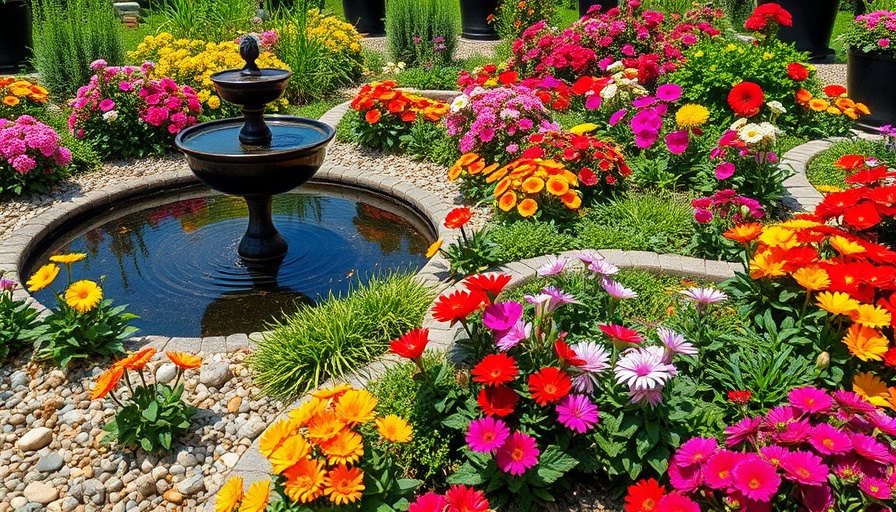
Understanding Heatwaves: A Growing Challenge for Your Garden
As global temperatures rise, the frequency and intensity of heatwaves are becoming more pronounced. For eco-conscious homeowners and modern homesteaders, the challenges posed by these extreme weather events are critical. Not only do they threaten the aesthetic appeal of gardens, but they also jeopardize plant health and sustainability. This article provides you with actionable steps to protect your garden during these sweltering summer months, ensuring that your plants can thrive despite the heat.
Essential Watering Techniques for Hot Conditions
Watering is perhaps the most crucial aspect of plant care during a heatwave. To optimize your watering practices, focus on early morning or late evening when temperatures are cooler, and plants are less likely to perspire. When watering, aim for the base of each plant using a watering can rather than a hosepipe; this prevents evaporation losses. Moreover, consider adopting watering techniques that conserve moisture:
Water Deeply but Infrequently: Allow water to penetrate deep into the soil, reaching the roots where it’s needed most.
Mulch Generously: A thick layer of mulch can significantly reduce moisture evaporation from the soil, helping keep your garden hydrated longer.
Container Plants: Special Care Is Needed
Container plants face unique challenges during extreme heat. They dry out faster than those planted in the ground, necessitating vigilant care. Expert Janet Manning, RHS Garden Water Scientist, suggests moving pots to shaded areas during heatwaves to lessen water stress. If you can't relocate them, opt for self-watering containers to maintain consistent moisture levels.
Creating Shade: Simple Solutions for Better Plant Health
One effective way to protect your plants is by creating shade. You can use garden fabric, parasols, or even plant larger, more resilient plants nearby to shield smaller ones from direct sunlight. This strategy not only reduces immediate stress on your plants but also decreases water consumption.
Lawn Care: Maintaining Resilience in the Face of Drought
For many homeowners, lawns are a point of pride and a natural extension of their gardens. During summer heat, lawns can turn brown, causing distress. However, this is typically a sign of dormancy, not death. With proper aeration to combat soil compaction, your lawn can recover when temperatures drop and rain returns. Aerating in spring and fall can improve drainage, effectively preparing your lawn for future heatwaves.
Taking Action Against Drought: Steps Forward for Homeowners
Being proactive is vital in combating drought conditions. For instance, participating in local conservation initiatives can raise awareness and foster community support. Gardening practices should adapt and evolve, integrating sustainable home design principles with eco-friendly gardening methods. Consider adopting zero-waste practices by implementing composting for continual soil enrichment while reducing your environmental footprint.
Conclusion: The Importance of Sustainable Practices
By adopting eco-friendly gardening techniques and prioritizing water conservation, you can not only protect your plants during heatwaves but also contribute to the larger goals of sustainability and environmental health. As you implement these strategies, remember that every effort counts towards creating a resilient garden equipped to face climate change challenges.
Let's make a positive impact—start by reviewing your gardening practices today and consider how small adjustments can contribute to a healthier planet. Join the movement towards sustainable living and protect your garden and its future!
 Add Row
Add Row  Add
Add 




Write A Comment